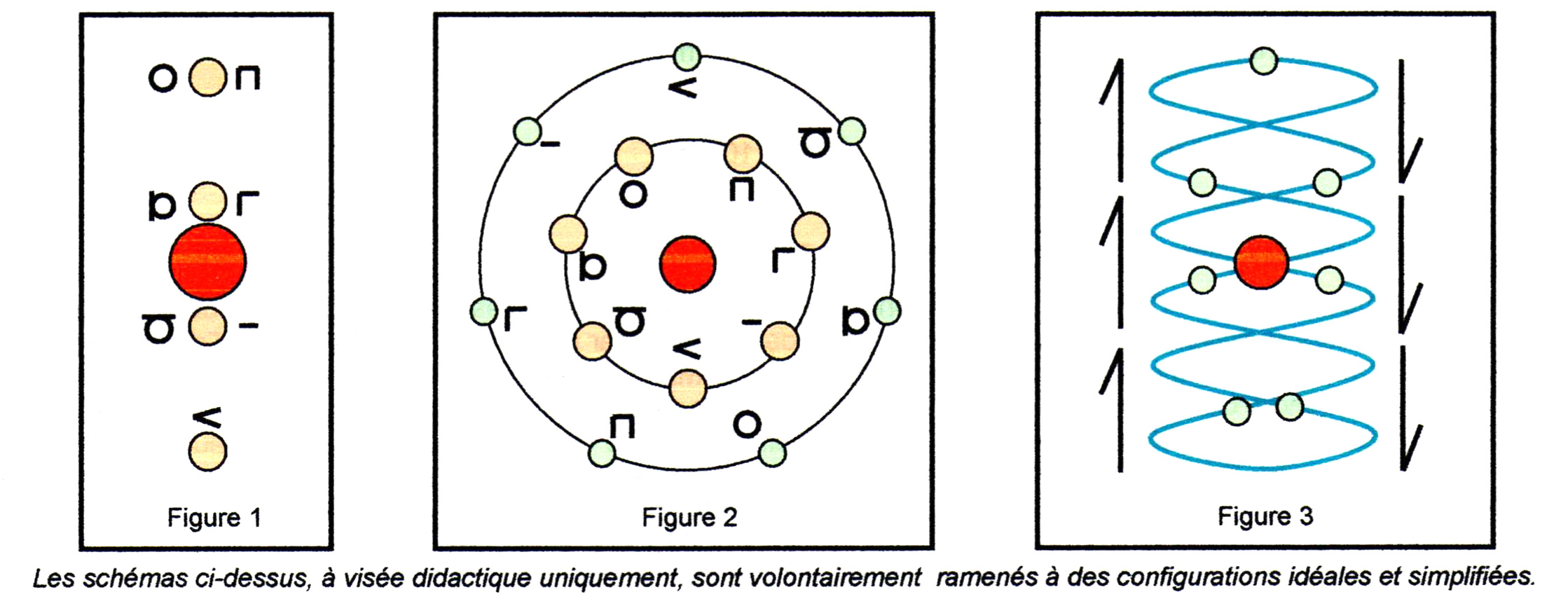by Jacques Costagliola
UMMO's rotation time on its axis or XI (Day UMMO): 600.0117 UIW= 185,527 terrestrial seconds (51.53 Terrestrial Hours or 2 Days and 3.53 Terrestrial)
The X- nycthemer - is reduced to 600 UIW
NAWEE, clearly visible from UMMO at dawn and dusk, makes thirteen sidereal revolutions around Iumma, while UMMO makes six sidereal revolutions. NAWEE, closer to Ioumma, rotates 2.1667 times faster than UMMO VO = VN / 2.1667
The XEE or an oummite corresponds to one third of a sidereal revolution, one third of UMMO's orbit around IUMMA (Sun of UMMO). One XEE = 60 XI = 36,000.7020 UIW = 77.303 Terrestrial Days. UMMO sidereal revolution: 3 xèé = 180 xi = 231.9 Terrestrial Days
The Ummite calendar was established from the apparent positions of NAWEE, in conjunction with IUMMA 7 times on six UMMO orbits or XEE-UMMO = 180x6 = 1080 XI.
UMMO's synodic revolution between two conjunctions or alignments NAWEE, Ioumma, UMMO occurs on average every 2.571 XEE, or 0.866 of UMMO's sidereal revolution, i.e. every six sevenths of an orbit (18 / 7 = 2.5714 XEE or 154 Terrestrial Days).
Fig. 1. apparent positions of NAWEE in relation to Ioumma, seen from UMMO in a plane perpendicular to the ecliptic and to the plane shown in figure 2. In fact, three of these positions are symmetrical two by two and the seven positions boil down to four (fig 1), (6/2) + 1 = 4. The single position recurring every 6 sidereal revolutions delimits the XEE-UMMO cycle.
When UMMO orbits 6, NAWEE orbits 13, so 13/7 for 6/7. When O Figure 2.
Anti-clockwise UMMO numbering gives the orbital positions of successive conjunctions. The first conjunctive cycle starts from UMMO < in the clockwise direction and leads to the first conjunction at UMMO -. The next conjunction moves back a seventh and ends in UMMO |-, and so on until the 6th, which ends in UMMO.
In figure 2bis, the Ummite retrograde numbering of the arrival positions is doubled to the decimal numbering of the departure positions in the real horological orbital direction.
O travels 6/7 and arrives at 6 -, N will be at 13 - in opposition, i.e. 2.1667 to 1. Now 0.1667 = 1/6 and for 1/7 the advance is 2+ 1/6 of a seventh, Naxee advances 2/7 and 1/7 of a seventh, a supplement which increases regularly and reaches 1/7 at the end of the course in position N6/13, necessitating double numbering.
The seven 6/7 ths of UMMO's orbits make six complete orbits, while NAWEE's advance reaches 7/7ths, i.e. one orbit at the end of the cycle, making exactly thirteen orbits...
Fig. 2 shows the seven oppositions, but only the positions of UMMO are exact, the first vertical
conjunction (on the diagram O < and N <, begins a six-orbit complete UMMO XEE-UMMO, but with the seven positions of UMMO numbered in the retrograde direction traversed in the clockwise direction. The duodecimal oummite numbering gives positions every 1/7 of an orbit, so you have to think your way through the six conjunctions of a sixth of a sidereal orbit 7 times, or the seven 1/7s of a complete orbit six times. The result is the same: you return to the first conjunction O<, N< / 7 x 0.4286 = 18; 6 x 2.57143 = 18.
NAWEE's positions telescope and are the 91 positions of NAWEE reduced to 7 of which only the first and last are real, NAWEE is only in its place in < or 0. When O arrives in 6/-. During one of UMMO's six orbits, NAWEE's travels 2 orbits and one seventh of an orbit, the accumulation of sevenths of an orbit creating the thirteenth orbit at the end of the cycle. NAWEE's positions are shown in Figure 2. UMMO's positions are true, NAWEE's only at first conjunction.
Fig. 3. UMMO's bihelicoid displacement on a fictitious quasi-cylinder. In figure 3 bis, the double numeration of figure 2 is restored. Three descending orbits on the right, three ascending orbits on the left. The descending orbits are differentiated from the ascending ones on the completed fig.3bis. The start is at the top in < ; there are 6 sevenths of an orbit between two successive positions, the course restores the six complete orbits. NAWEE is absent on fig. 3.
For more details, please look at ana41%20-%20Analyse%20de%20la%20NR21.pdf (in french)

